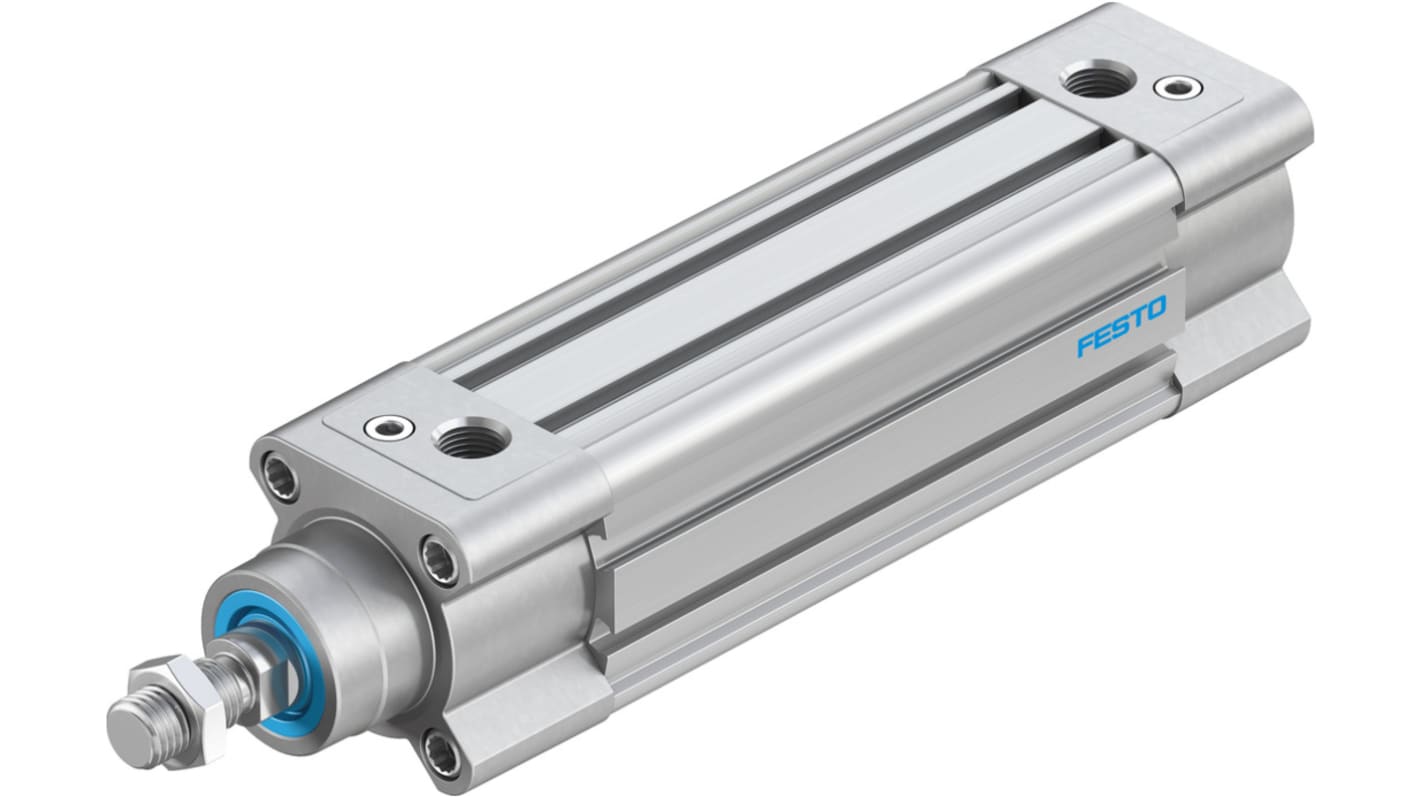Festo Pneumatic Piston Rod Cylinder - 3660623, 40mm Bore, 100mm Stroke, DSBC Series, Double Acting
- RS Stock No.:
- 202-1096
- Mfr. Part No.:
- DSBC-40-100-D3-PPVA-N3
- Brand:
- Festo

Subtotal (1 unit)*
£159.90
(exc. VAT)
£191.88
(inc. VAT)
FREE delivery for orders over £50.00
Temporarily out of stock
- Shipping from 05 January 2026
Need more? Click ‘Check delivery dates’ to find extra stock and lead times.
Units | Per unit |
|---|---|
| 1 + | £159.90 |
*price indicative
- RS Stock No.:
- 202-1096
- Mfr. Part No.:
- DSBC-40-100-D3-PPVA-N3
- Brand:
- Festo
Specifications
Technical Reference
Legislation and Compliance
Product Details
Find similar products by selecting one or more attributes.
Select all | Attribute | Value |
|---|---|---|
| Brand | Festo | |
| Manufacturer Series | DSBC | |
| Model Number p | 3660623 | |
| Action | Double | |
| Stroke | 100mm | |
| Bore | 40mm | |
| Select all | ||
|---|---|---|
Brand Festo | ||
Manufacturer Series DSBC | ||
Model Number p 3660623 | ||
Action Double | ||
Stroke 100mm | ||
Bore 40mm | ||
- COO (Country of Origin):
- DE
Festo Pneumatic Profile Cylinder, 40mm Bore, 100mm Stroke - DSBC-40-100-D3-PPVA-N3
This double-acting pneumatic profile cylinder from Festo ensures the proper functioning of your automation and mechanical processes. A high-alloy steel rod and wrought-aluminium cylinder barrel resist corrosion to extend the lifespan of the component. Ports on each end effectively control extension and retraction by alternating actions based on the highest air pressure to establish optimal efficiency. Variable end-position cushioning decelerates the rod and piston at the end of the cylinder to lower the internal impact force and establish higher piston speeds.
• Stroke length of 100mm delivers extended thrust
• Advanced stroke force of 754N at 6 bar pressure makes the cylinder suitable for heavy-duty applications
• Wide operating temperatures of -20°C to +80°C for use in harsh conditions
• Advanced stroke force of 754N at 6 bar pressure makes the cylinder suitable for heavy-duty applications
• Wide operating temperatures of -20°C to +80°C for use in harsh conditions
Applications
• Automotive industry
• Aerospace applications
• Food processing equipment
• Aerospace applications
• Food processing equipment
What's the benefit of a double-acting pneumatic cylinder?
A double-acting pneumatic cylinder handles pressurised gas, air and fluids at both ends of the piston to create extension and retraction forces and deliver reliable control over the piston and overall movements.
Why does a double-acting cylinder have two ports?
In a double-acting cylinder, one port allows the hydraulic fluid, gas or air to enter the barrel, causing piston extension, while the other port retracts the cylinder to establish linear motion.
Related links
- Festo Pneumatic Piston Rod Cylinder - 3660618 40mm Stroke Double Acting
- Festo Pneumatic Piston Rod Cylinder - 3660622 80mm Stroke Double Acting
- Festo Pneumatic Piston Rod Cylinder - 3660629 300mm Stroke Double Acting
- Festo Pneumatic Piston Rod Cylinder - 3660624 125mm Stroke Double Acting
- Festo Pneumatic Piston Rod Cylinder - 3660627 200mm Stroke Double Acting
- Festo Pneumatic Piston Rod Cylinder - 3660619 50mm Stroke Double Acting
- Festo Pneumatic Piston Rod Cylinder - 3660616 25mm Stroke Double Acting
- Festo Pneumatic Piston Rod Cylinder - 3660615 20mm Stroke Double Acting
